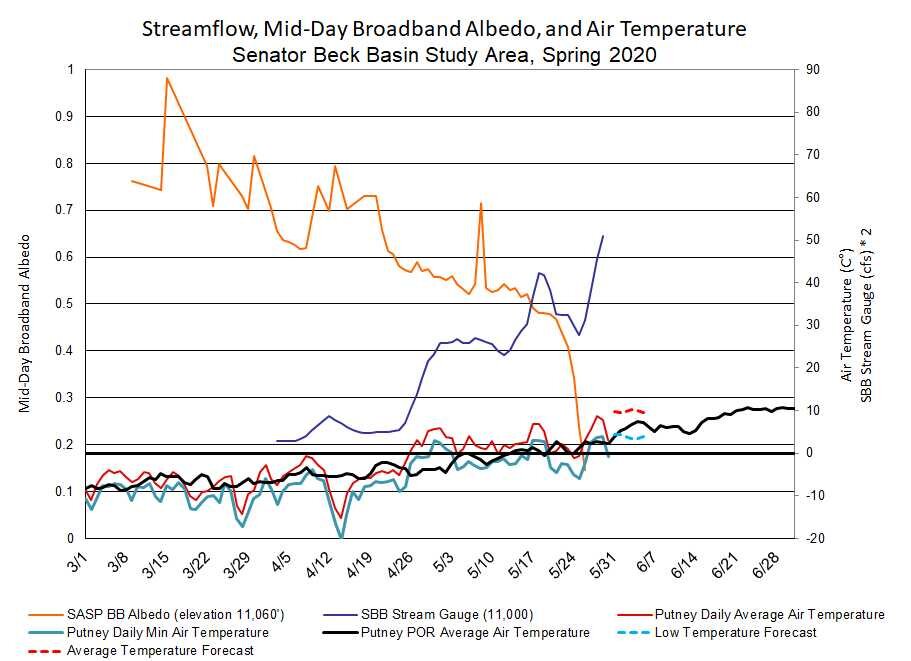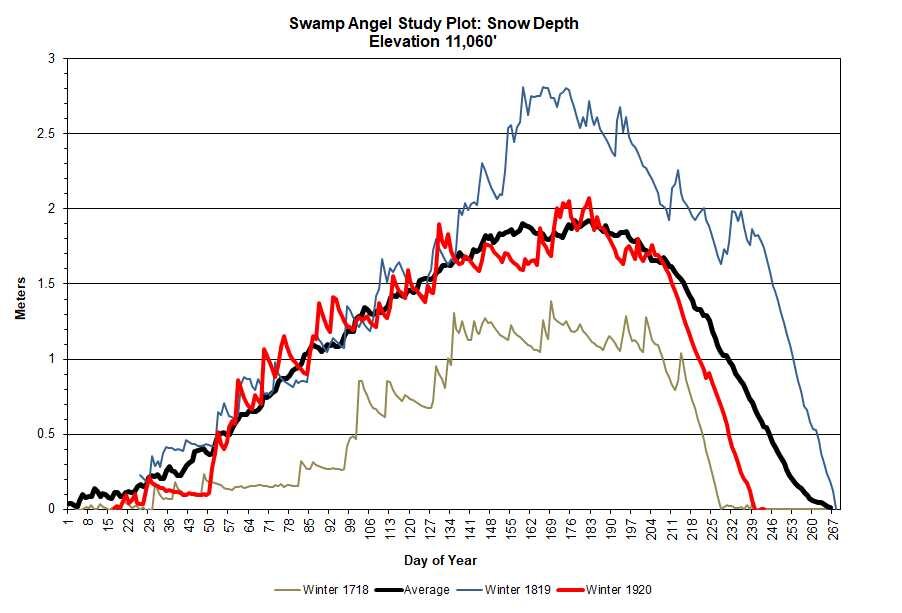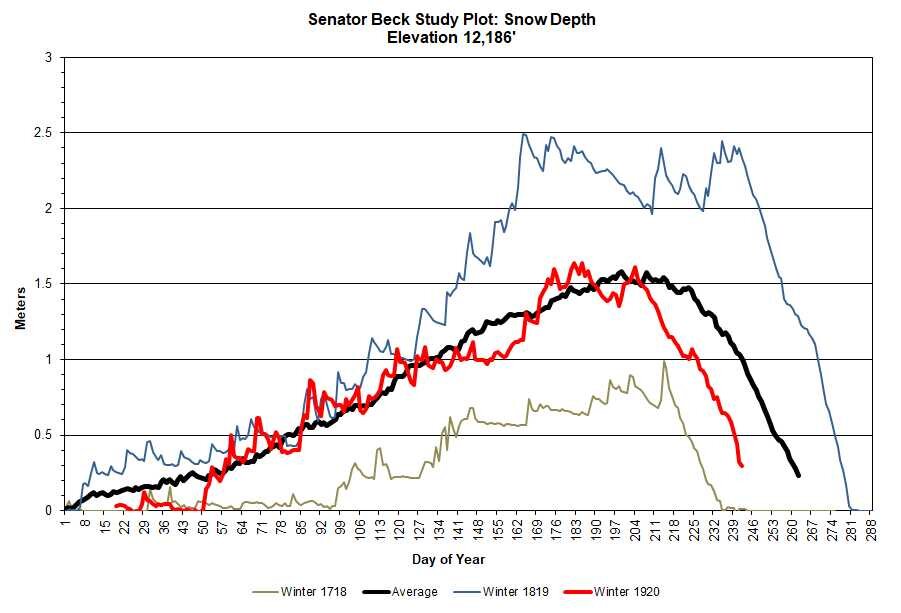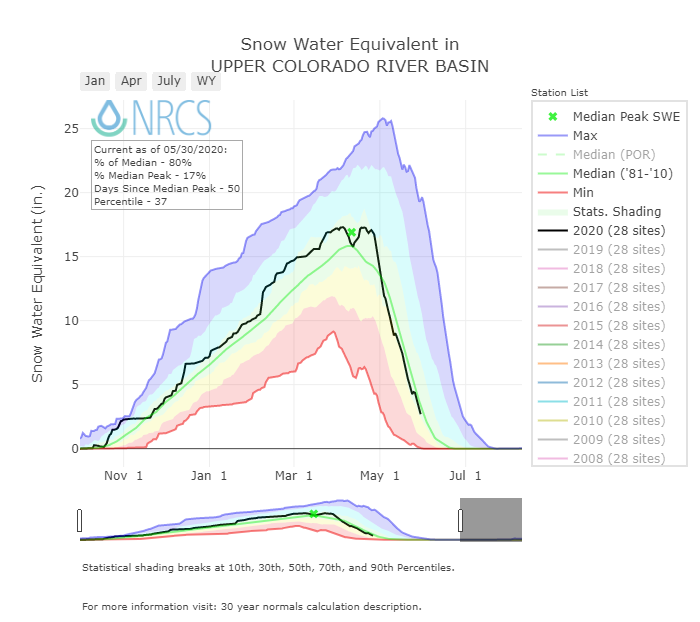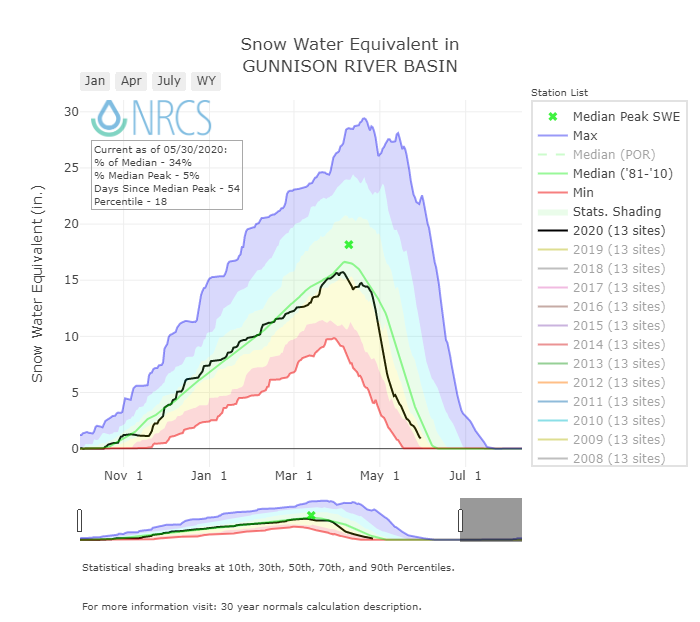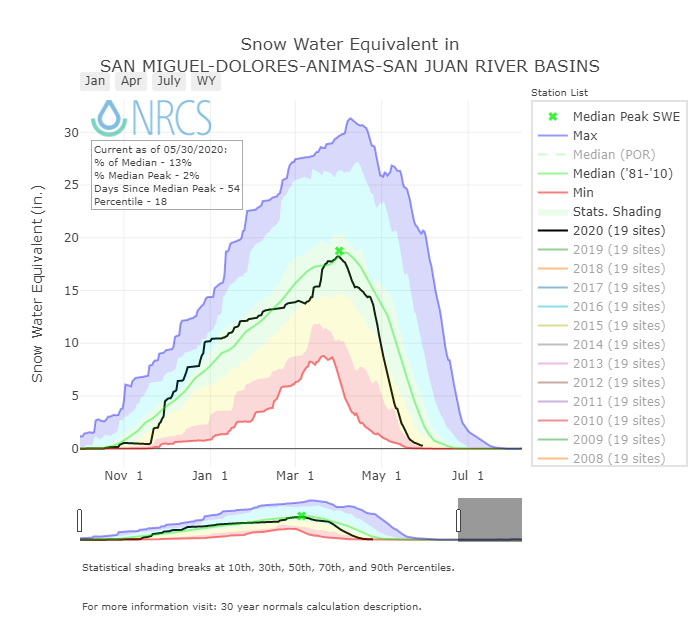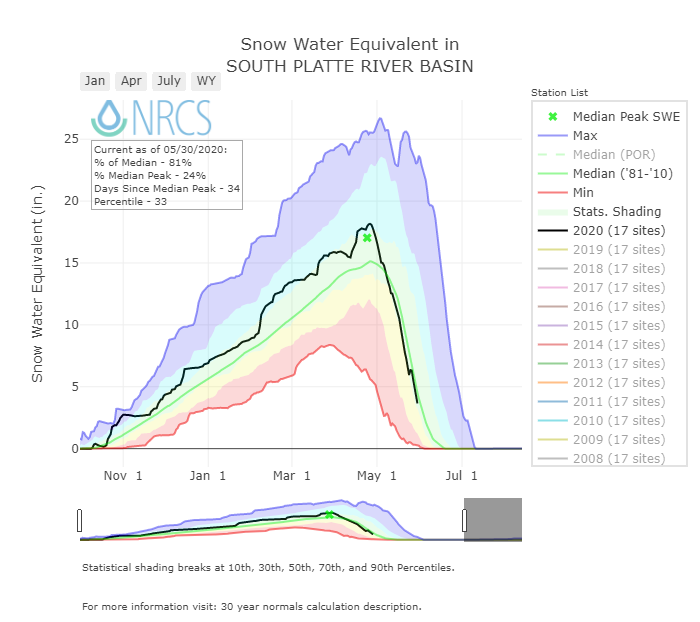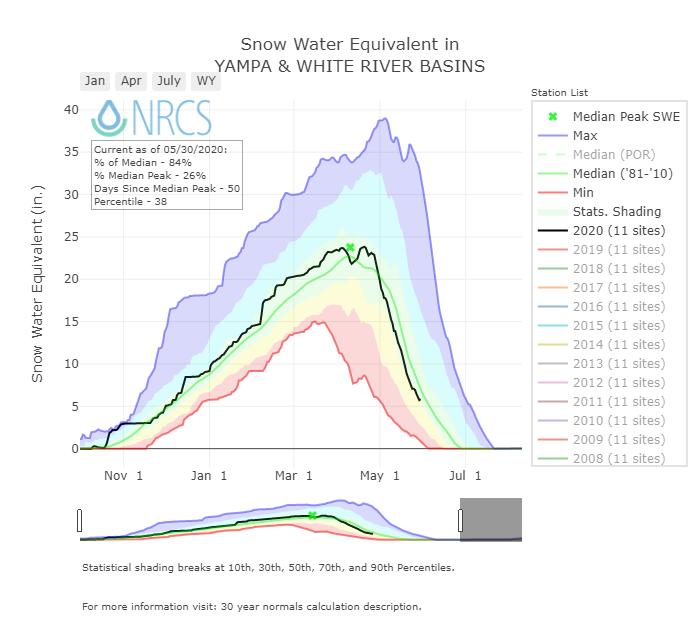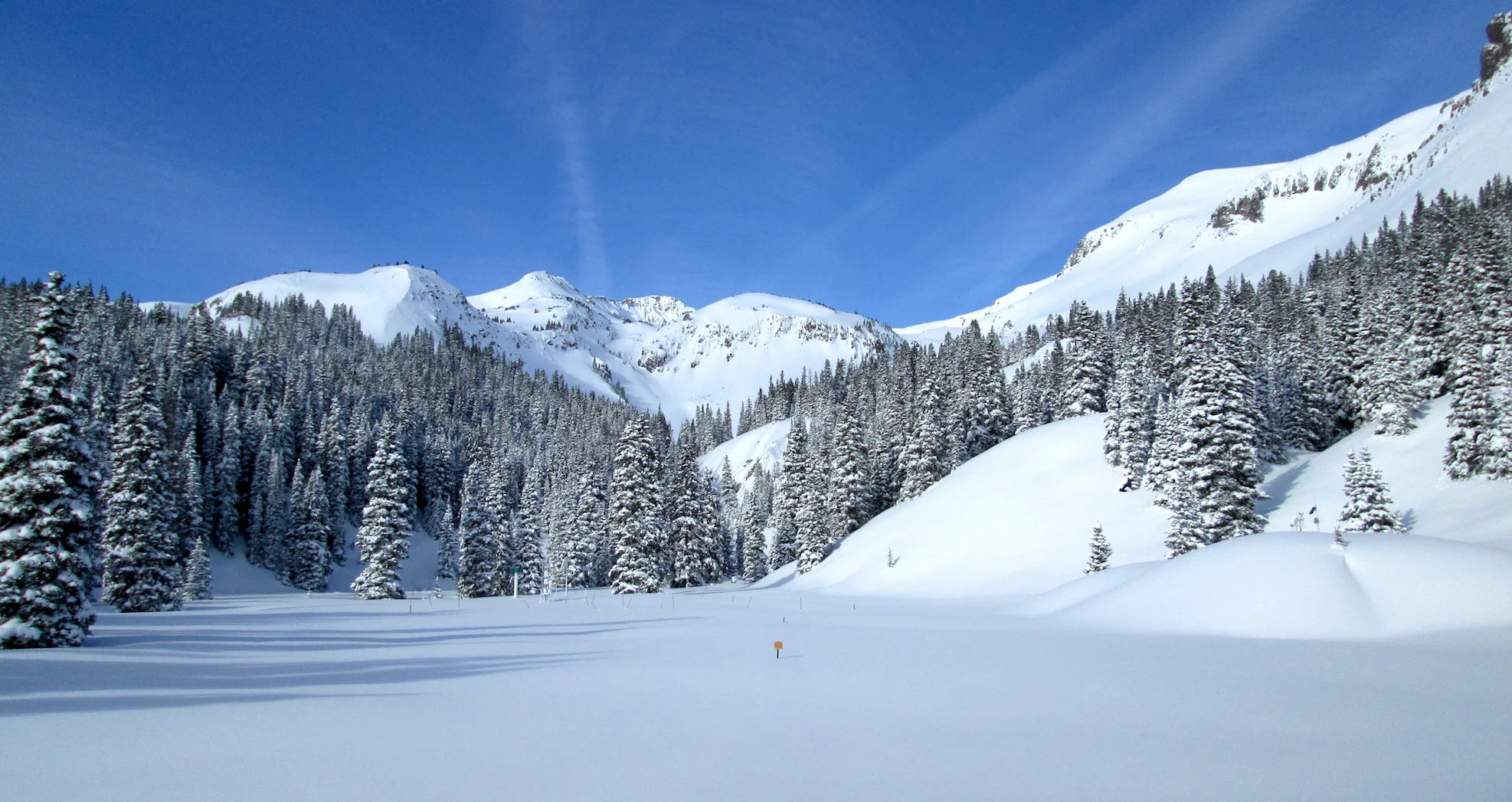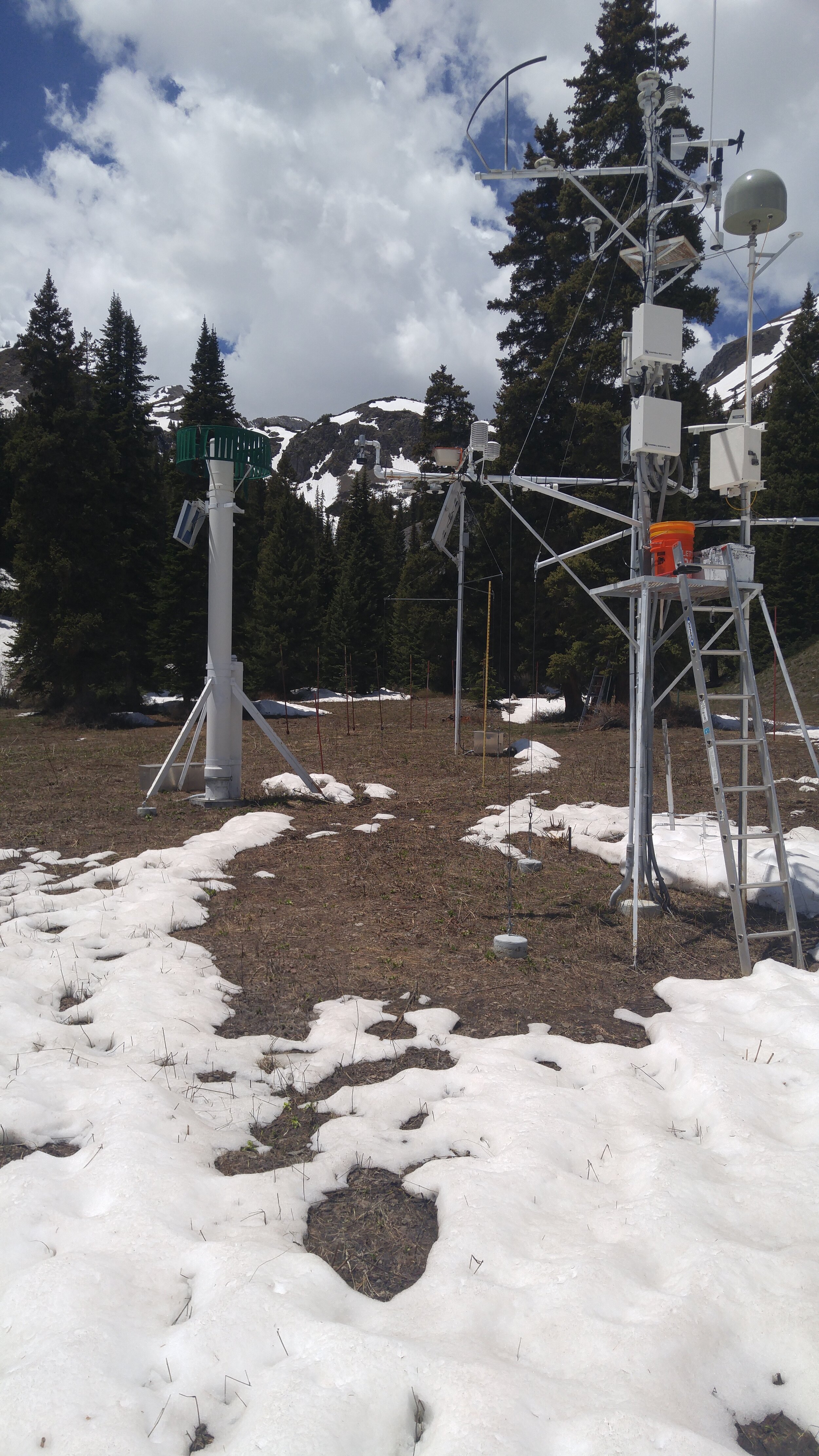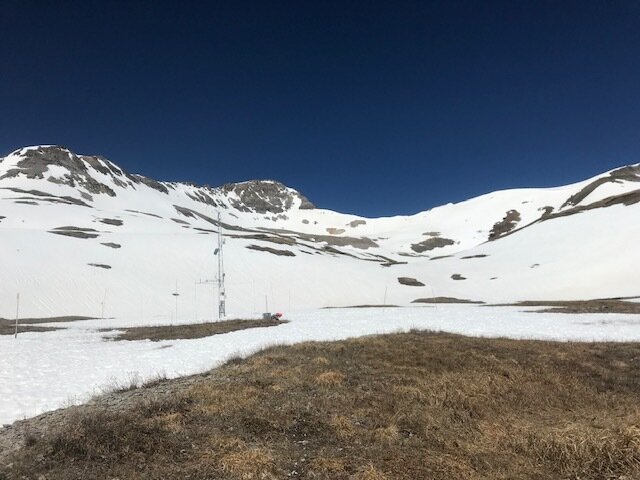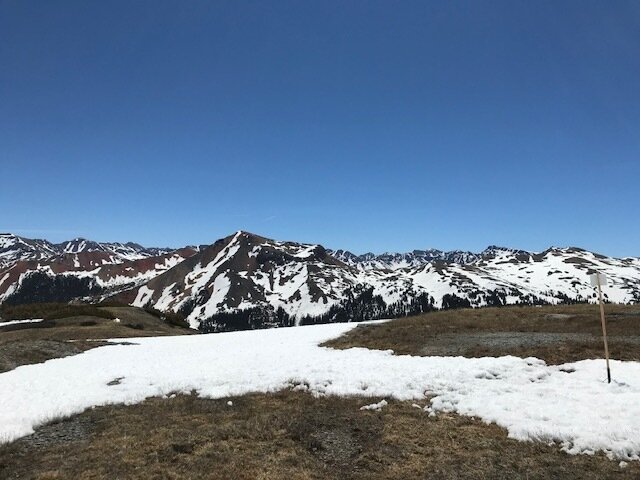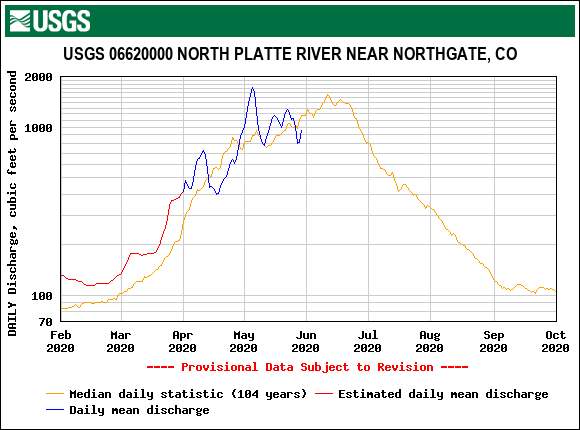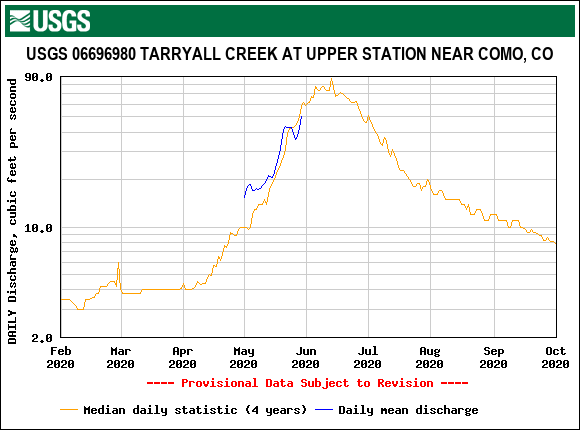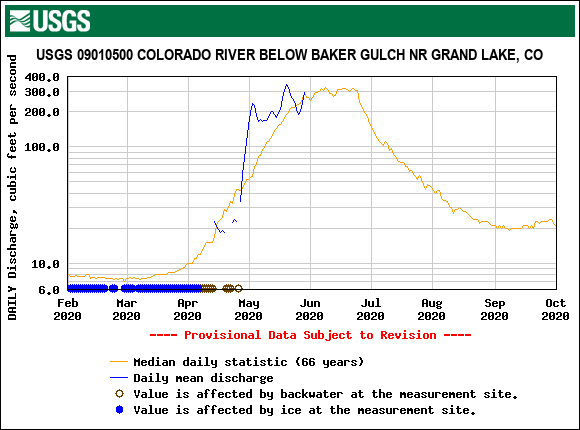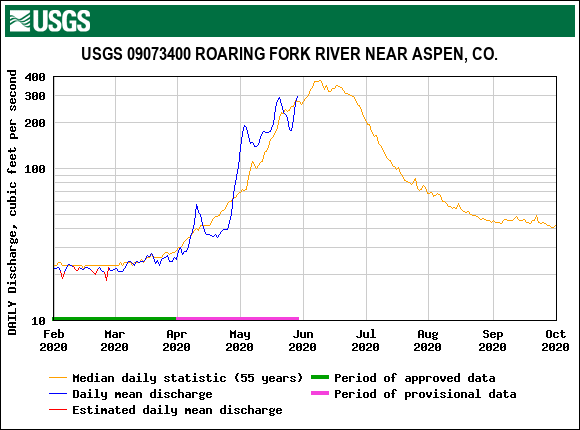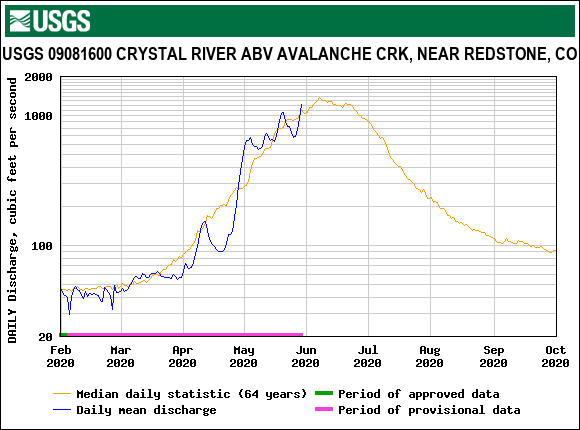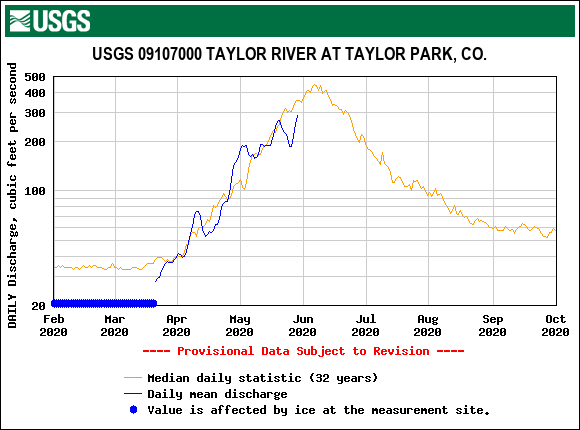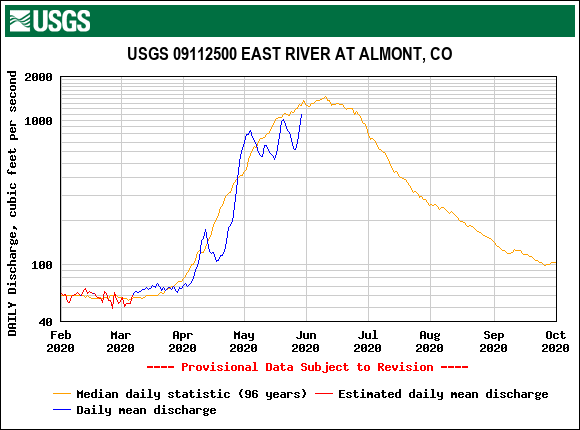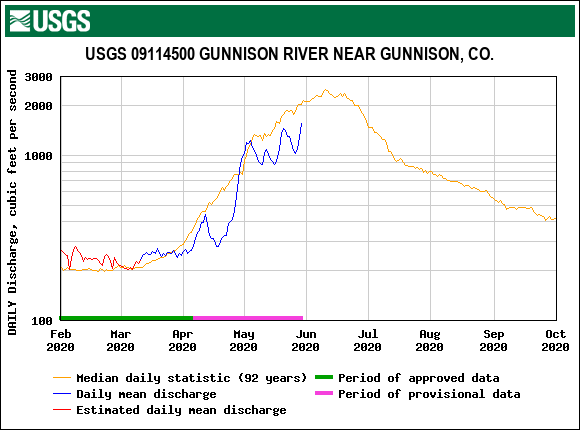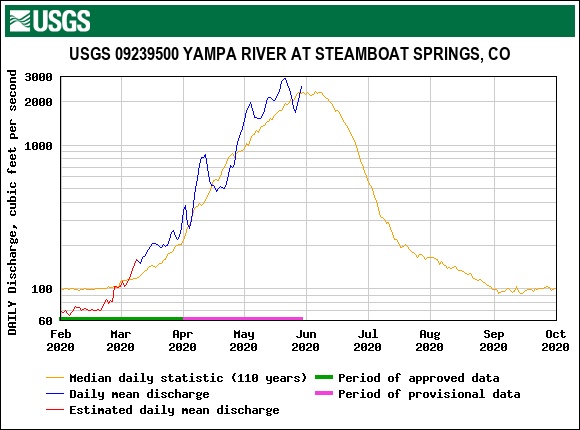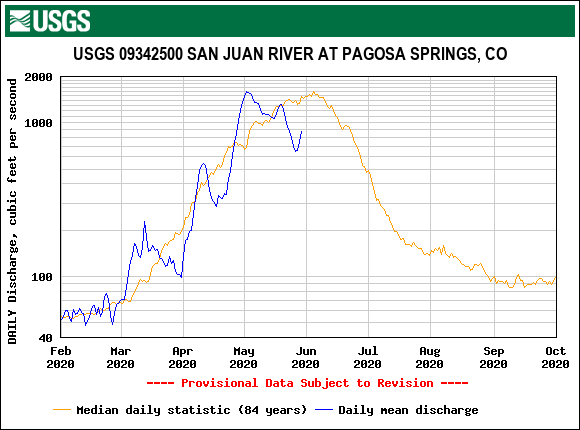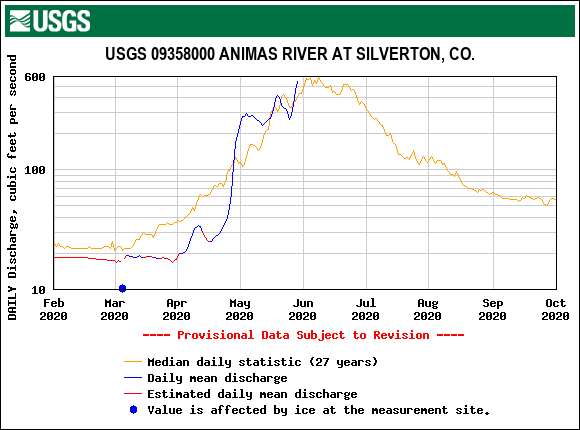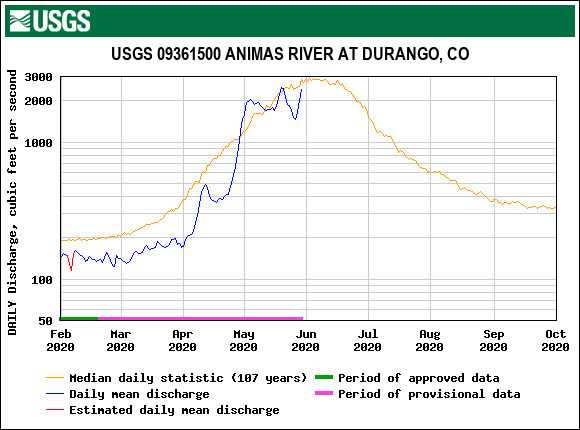CODOS Update May 30, 2020: Snow Gone at SASP, Almost Gone at SBSP, Peak Flows, Low Volumes
Greetings from Silverton,
Late afternoon on Wednesday, May 27 at Swamp Angel (11,060’), which is a good location for ascertaining the average amount of snow at that elevation in the San Juans, snow was effectively all gone. At Senator Beck Study Plot (12,200’) snow has been melting nearly at the same rate as Swamp Angel for at least the past week (~1”/day). Currently, there is about 1.9” SWE at Senator Beck Study Plot as 9” snow depth. In our last update on May 19 we discussed how peak flow at SBB and many surrounding watersheds would likely be seen as Swamp Angel melted out (using SASP and the Study Basin as an indicator). On May 28 SBB streamflow started its sharp increase towards its likely peak of the season. With SBB being located at the headwaters of four major watersheds we are presently seeing surrounding watersheds mirror this upward trend.
In Southern Colorado this does not mean much as volumes are low. Water is already in short supply. Water users are already stressed. This season the snowmelt hydrograph got nailed on both ends; in the beginning of the season snowmelt went towards soil moisture recharge, and in the latter part of the season an extremely dry and hot spring added very little precipitation and depleted the snowpack rapidly. I usually say this every year, but cumulative SWE is what matters. In Central and Southern Colorado peak SWE was very near normal but the spring drought erased what we had expected to see unfold from what we were looking at in early April (even Northern Basins with strong snowpacks are seeing a faster than normal ablation). Perhaps the opposite example of this would be WY2015 when a dry winter meant a very low peak SWE, but a very wet spring resulted in what was considered a very successful season.
Of course dust-on-snow in a dry spring particularly exacerbates the problem. Central and Northern Colorado experienced mostly light dust based on what these regions normally see. Southern Colorado saw dust conditions that were typical, which in Southern Colorado still means very significant conditions affecting the energy budget of the snowpack and melt rates, and this spring the dust sat on the surface for the duration except for a couple snowfall induced “albedo resets”.
Please see plots and pictures below.
Below: Pictures of Swamp Angel May 27 and 28. Pictures show all-dust-layers-merged being sampled, stream gauging with Bureau of Reclamation folks (Susan Behery and Tami Sheldon) and Gigi Richard and her students from Fort Lewis College, and general snow conditions (but conditions are drastically different now).
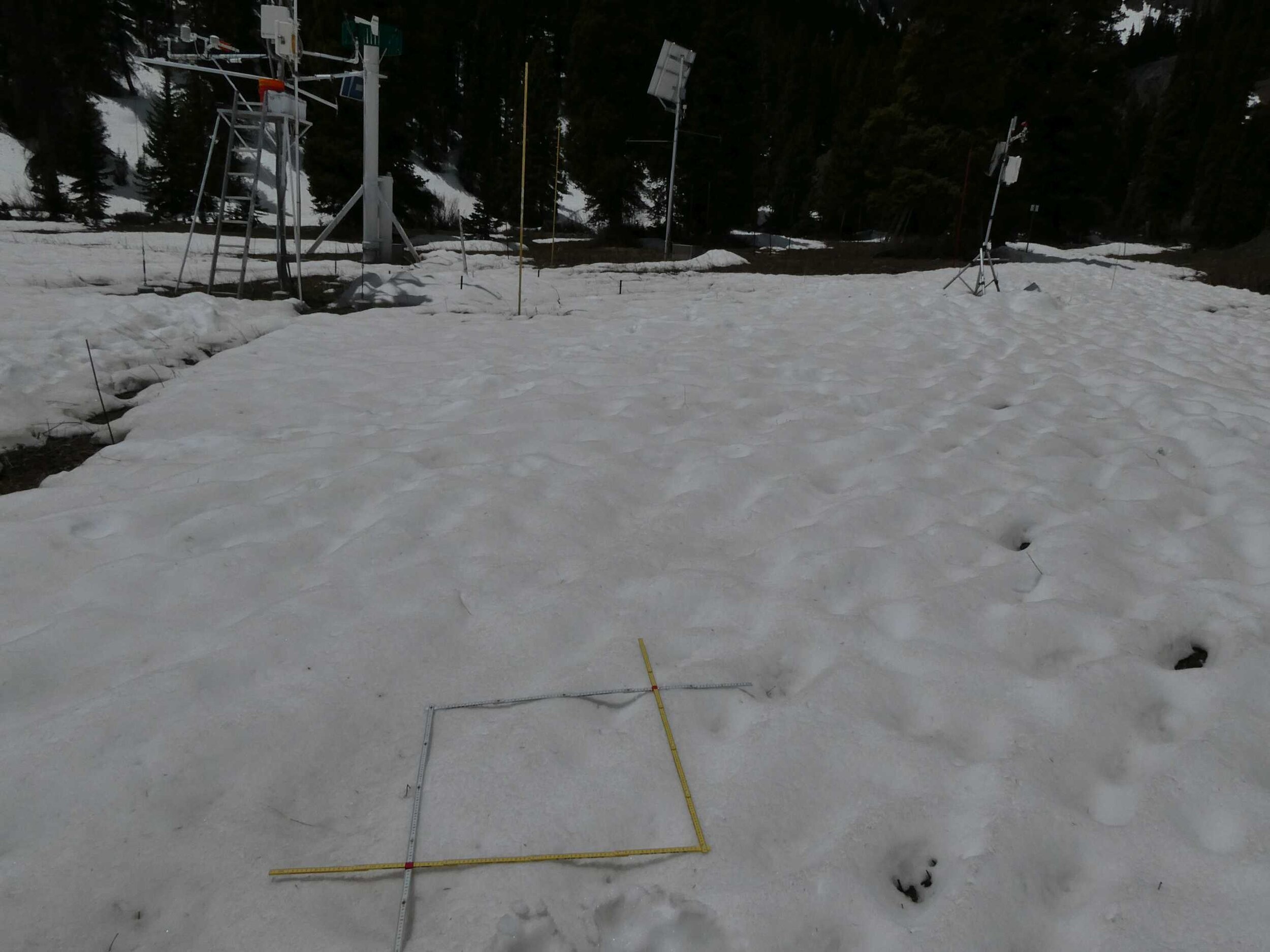

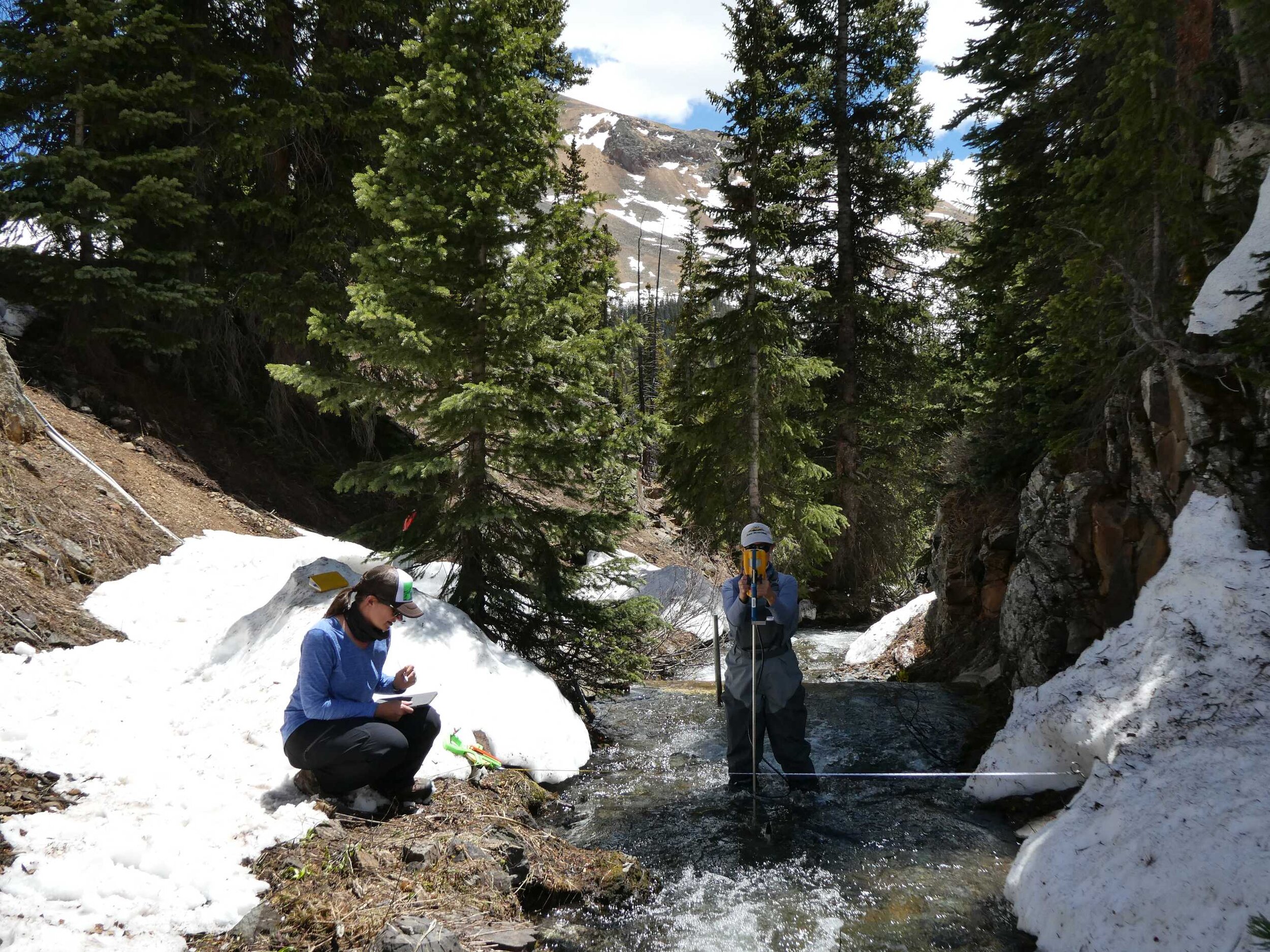
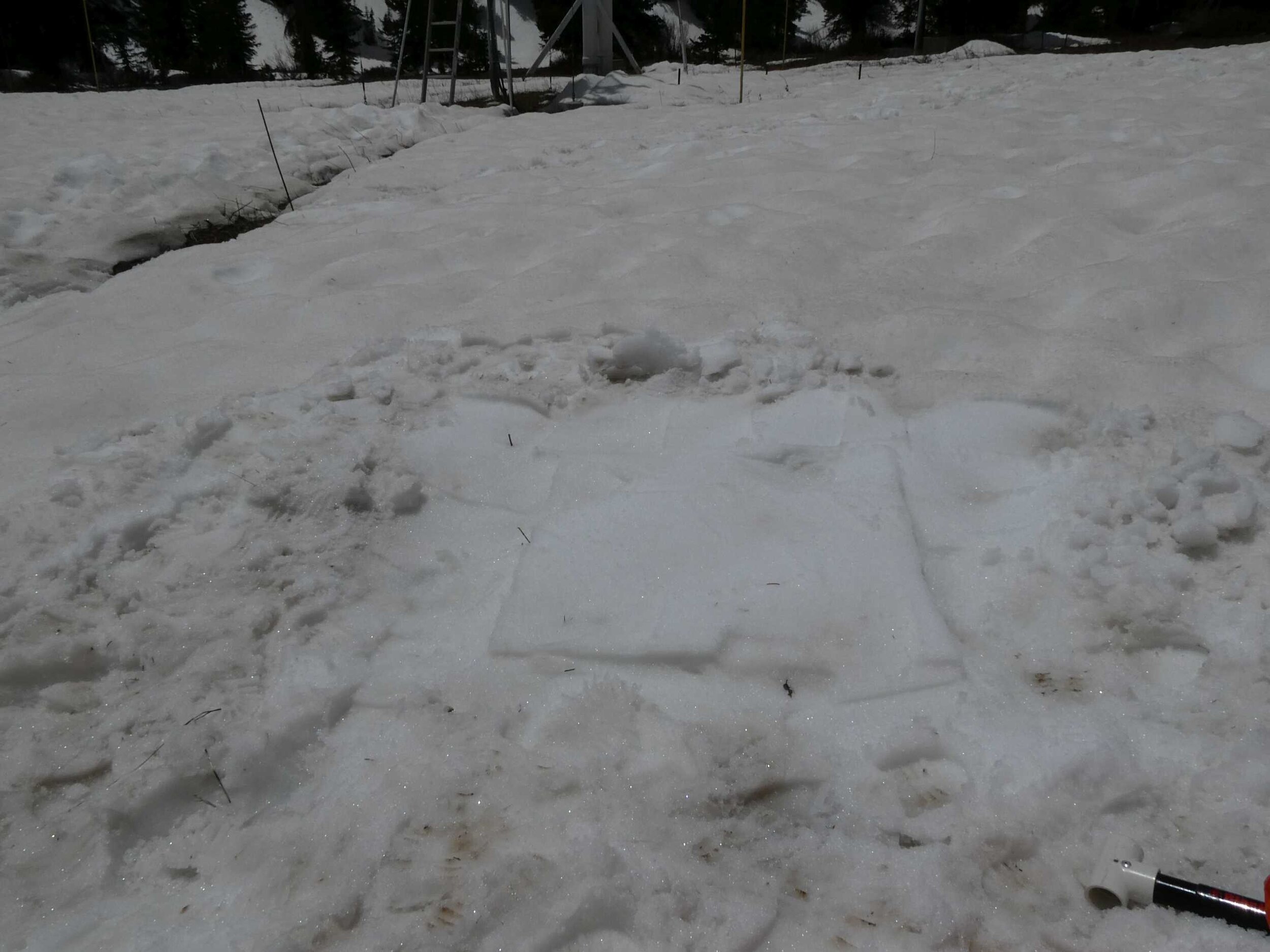
Below: Pictures of Senator Beck on May 26. Much of the snow you see is now gone.
Below: The last number of days were a return to hot and dry conditions. Albedo rapidly declined as dust concentration progressed and then crashed once bare ground was exposed. In conjunction to albedo declining and full snow ablation at SASP streamflows at SBB and many watersheds are reaching peak flows.


